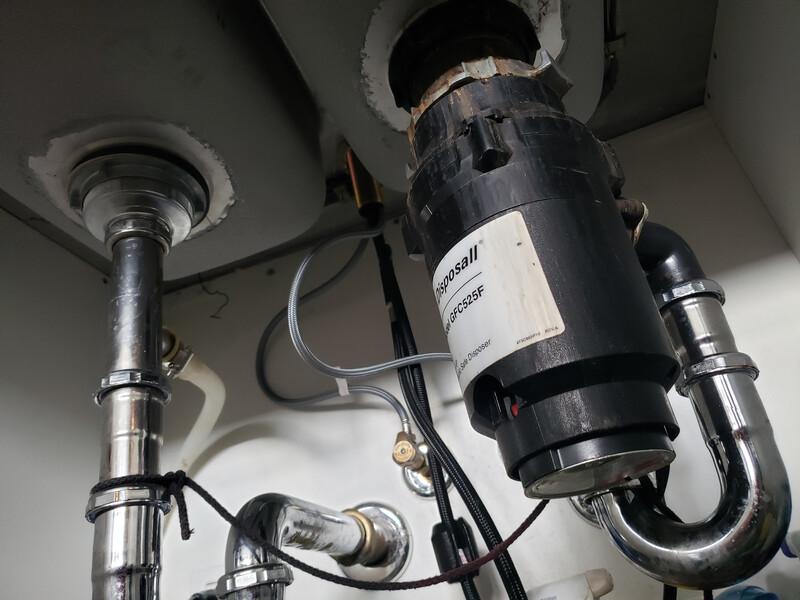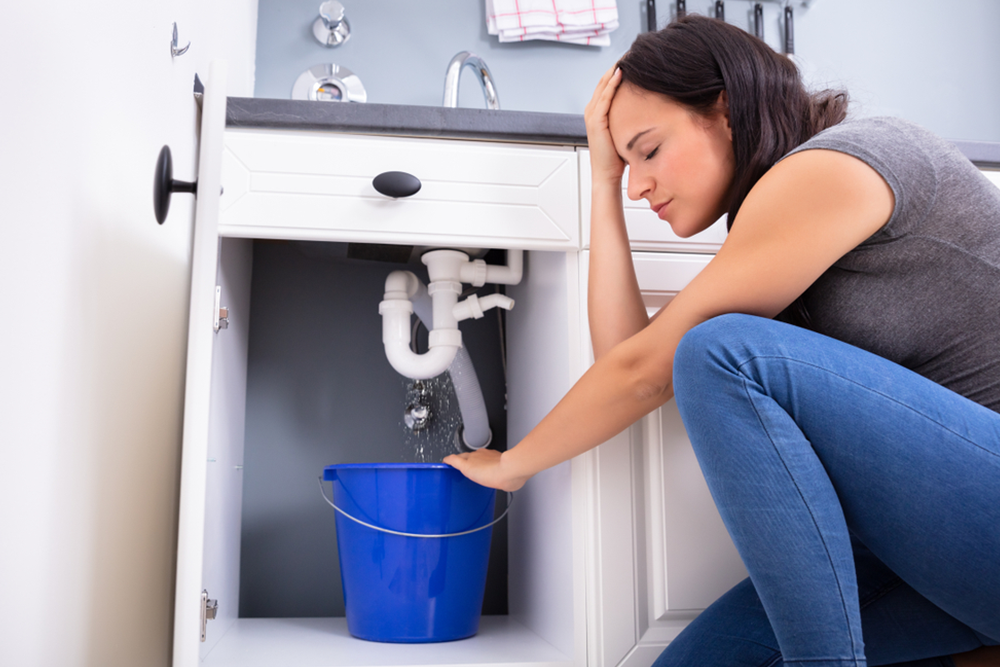Best Tips for Fixing a Leaking Waste Disposal Unit
Best Tips for Fixing a Leaking Waste Disposal Unit
Blog Article
This article listed below relating to Why Is My Garbage Disposal Leaking From the Bottom? is seriously stimulating. You should check it out.

Garbage disposals are vital kitchen appliances that help in getting rid of food waste efficiently. However, a dripping waste disposal unit can be an aggravating and untidy problem to manage. Luckily, lots of leakages can be repaired easily with a couple of simple actions. In this article, we will discuss just how to deal with a leaking waste disposal unit efficiently.
Introduction
Garbage disposals are set up under kitchen area sinks and are created to shred food waste right into smaller pieces, allowing it to pass through the pipes system conveniently. While these devices are normally trusted, leakages can take place with time because of deterioration, loose links, or damages to the system.
Common Reasons For Leaks in Waste Disposals
Worn Seals and Gaskets
Seals and gaskets play an important role in protecting against water from dripping out of the waste disposal unit. With time, these components can wear away, bring about leakages around the disposal device.
Loose Links
The links in between the waste disposal unit and the pipes system can come to be loosened gradually, triggering water to leak out during operation.
Fractures or Openings in the Disposal Unit
Physical damages to the garbage disposal, such as splits or holes in the real estate, can likewise lead to leakages.
Identifying the Resource of the Leak
Before attempting to deal with a leaking waste disposal unit, it is necessary to recognize the resource of the leakage. This can typically be done via visual inspection or by performing basic examinations.
Visual Assessment
Examine the waste disposal unit unit thoroughly for any signs of water leak. Pay close attention to areas around seals, gaskets, and link factors.
Evaluating for Leaks
One method to examine for leaks is by running water via the disposal device and looking for any kind of visible signs of leakage.
Devices and Products Needed for Fixing a Leaking Garbage Disposal
Before starting the fixing procedure, collect the essential devices and products, consisting of a screwdriver, adjustable wrench, plumbing technician's putty, substitute seals or gaskets, and epoxy or patching product for repairing cracks or openings.
Step-by-Step Guide to Taking Care Of a Dripping Waste Disposal Unit
Turn Off the Power
Prior to trying any type of fixings, guarantee that the power to the waste disposal unit unit is switched off to check here prevent the threat of electrical shock.
Find the Leak
Identify the precise location of the leakage and determine the reason.
Tighten Links
Use a wrench to tighten any loose links between the disposal unit and the plumbing system.
Replace Seals or Gaskets
If the leakage is because of used seals or gaskets, eliminate the old components and change them with brand-new ones.
Patching Cracks or Openings
For splits or holes in the disposal unit, usage epoxy or a suitable patching product to seal the damaged area.
Testing the Waste Disposal Unit After Repair
When the fixing is total, examine the waste disposal unit by running water with it to ensure that the leakage has actually been settled.
Preventive Maintenance Tips to Prevent Future Leakages
To prevent future leaks, it is essential to execute routine upkeep on your garbage disposal. This consists of keeping it clean, avoiding placing non-food items or tough objects down the disposal, and occasionally checking for leakages or various other problems.
Conclusion
To conclude, repairing a leaking waste disposal unit is a fairly simple procedure that can be completed with basic tools and products. By complying with the steps outlined in this write-up and practicing precautionary upkeep, you can maintain your garbage disposal in good working problem and avoid expensive fixings in the future.
HERE’S HOW TO FIX YOUR GARBAGE DISPOSAL
WHAT TO DO IF SOMETHING IS STUCK IN YOUR GARBAGE DISPOSAL
If the impeller won’t turn, there’s probably something stuck in the disposal. It could be a steak bone or peach pit, although plumbers report pulling all sorts of inappropriate objects out of disposals, such as bottle caps or aluminum foil. Make sure power to the disposal is off, and look inside to see if you can see the source of the jam.
Never stick your fingers in a disposal. Pull out anything you see with tongs or pliers.
If the disposal still won’t work, it may be time to call a plumber or consider buying a new disposal. GEM Plumbing & Heating is here for all of your garbage disposal needs.
WHAT TO DO IF YOUR GARBAGE DISPOSAL DRAIN IS CLOGGED
Take everything out from underneath your sink and put a bucket or other container under your disposal to catch any water that drains out. Disconnect your disposal from the power supply. If it’s plugged into a wall outlet, unplug it. If it’s hardwired into an electrical box, go to the electrical panel and turn off the breaker for the disposal. Pour ¼ cup of baking soda into the drain, followed by ½ cup of white vinegar. Give the solution a few minutes to fizz and do its work. Look into the disposal with a flashlight to see if you can see an object that might be causing the clog. If you see it, remove it using tongs or pliers. MORE TIPS ON DEALING WITH A CLOGGED GARBAGE DISPOSAL
Never use drain cleaner in a garbage disposal. It can damage the plastic parts inside the disposal. You can also be splashed with the caustic liquid while working to clear the clog. Beware! Never stick your fingers into a garbage disposal. Trust us — not a good idea. In many instances, your dishwasher drains through your garbage disposal. This allows the disposal to grind any large food particles that may be drained out of your dishwasher. There are some jurisdictions, however, where the plumbing code prohibits such a connection. WHAT TO DO WHEN YOUR DISHWASHER DRAINS THROUGH THE DISPOSAL
Run some water in the sink so your plunger has at least a ½-inch of water to create a seal and plunge vigorously up and down several times. You may need to repeat this several times. Run hot water down the drain to clear any residue that remains.

As a serious reader about Why Is , I assumed sharing that article was a good idea. Loved our content? Please share it. Help someone else find it. Thanks a lot for your time. Kindly stop by our blog back soon.
Free Estimate Report this page